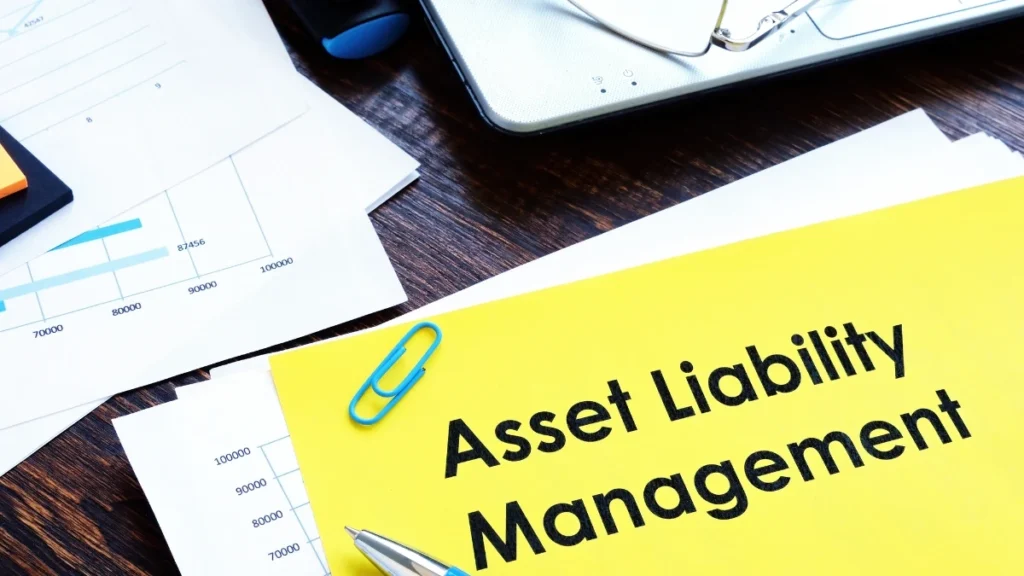Does your good job leave you feeling rich one day and broke the next? You’re not the only one. Many people with steady paychecks feel stuck, living for the next payday without ever getting ahead. The core problem is that your money is tied directly to your job. When the work stops, the money stops. That’s a stressful way to live, no matter your salary.
It won’t tell you to skip your morning coffee or cut coupons. Instead, it will show you how to think about money in a completely new way. You will learn the simple system that wealthy people use to have their money work for them.
These are real, actionable steps to build wealth and find financial freedom. The goal is to build your own Millionaire Cash Flow.
Asset vs. Liability: The Simple Rule of Wealth
Asset
“Puts money IN your pocket”
- ✅ Rental Property
- ✅ Dividend Stocks
- ✅ A Small Business
Liability
“Takes money OUT of your pocket”
- ❌ Luxury Car
- ❌ Your Primary Home
- ❌ Boats & Gadgets
Build a Strong Financial Foundation
The average millionaire has seven streams of income.
Active
Income
Portfolio
Income
Passive
Income
Side
Business
How You Use Your Paycheck Matters
The Common Mistake
The Wealthy Method
Is Your Debt Making You Richer or Poorer?
Good Debt
Buys assets that generate income or appreciate.
Example: A loan for a rental property where the tenant’s rent covers the mortgage and leaves you a profit.
Bad Debt
Buys liabilities that depreciate and cost you money.
Example: A high-interest loan for a brand new car that loses value the moment you drive it off the lot.
Your Financial Education Never Ends
Read Daily
Listen to Podcasts
Focus on One Topic
Find a Mentor
Your 30-Day Mission to Take Control
-
Track Everything
Log every single dollar you spend. No exceptions!
-
Find a “Liability” Leak
Identify one recurring expense that drains your cash.
-
Cut It & Redirect
Cancel it and set up an automatic transfer for that amount.
-
Buy Your First Asset
Use the redirected money to buy an asset, no matter how small.
1. Know Where Your Money Goes (An Asset vs Liability)

If you want to build wealth, you must learn one simple rule that rich people know and most others don’t. This rule is about the difference between an asset and a liability. Getting this right is the first and most important step. It changes how you see everything you spend money on.
An asset is anything that puts money into your pocket. Think of it like a little money making machine you own. A liability is anything that takes money out of your pocket. It’s a money-drainer. For example, self-made millionaires often don’t buy brand new luxury cars. They know a reliable used car does the same job without draining thousands from their bank account money that could be used to buy an asset instead.
Here’s how to apply this rule to your own life:
- The hard truth: Your family car is a liability. It costs you gas, insurance, and repairs every month. The home you live in is also a liability, because you pay the mortgage, taxes, and for upkeep. They take money from you.
- The middle-class trap: Most people get a paycheck and immediately buy liabilities they think are assets, like a new phone, a boat, or an expensive watch.
- The wealthy habit: Wealthy people get a paycheck and buy true assets first. They buy stocks, invest in a small business, or purchase a rental property that pays them.
- Your new goal: Use your main income to buy assets. Those assets will then create more income for you, creating a cycle that builds real wealth.
2. Create Multiple Income Streams

Relying on a single paycheck from your job is the biggest financial risk you can take. If you lose that job, your entire income disappears. Think of your income like a table; a table with one leg is unstable. You want to build a table with many legs so it stays strong no matter what. This is why you must create multiple income streams.
Studies of the wealthy show that the average millionaire has seven streams of income. This doesn’t happen overnight. They start by adding one extra stream at a time. You can do the same. You have your job money (Active Income), but you can add investment money (Portfolio Income) and money that comes in mostly on its own (Passive Income).
Here are simple ideas you can start with:
- Start a Portfolio Stream: Buy stocks or funds that pay you dividends (a small piece of the company’s profit). A popular fund is SCHD. You can also open a high-yield savings account to earn more interest on your cash.
- Build a Passive Stream: You could write and sell a simple e-book on a topic you know well. Or, you can use a website like Fundrise to invest in real estate with a small amount of money.
- Add Another Active Stream: Find a way to turn a skill into a small side business. If you are good at organizing, offer your services to friends for a fee. If you know how to fix computers, you can charge for that.
- Start small: Your goal isn’t to replace your job today. Your goal is to get your first extra “income soldier” working for you..
3. Pay Yourself First, The Millionaire Way

You’ve probably heard the advice to “pay yourself first” a hundred times. Most people think this means moving 10% of their paycheck into a savings account, and while that’s better than nothing, it’s not how you build serious wealth. The wealthy follow this rule in a completely different, more powerful way. It’s a shift from saving what’s left over to investing on purpose.
Saving is like parking your money it sits there and is safe, but it doesn’t really go anywhere. Investing is putting your money to work. It buys things that can grow and generate more money for you down the line. For the wealthy, “paying yourself first” means taking a set part of their paycheck to buy an income-producing asset before any other bills get paid. Not after the rent, not after the car payment first. This simple change in order turns your income from just something you spend into a powerful wealth-building engine.
Here is the simple system to follow:
- Understand the Common Mistake: Most people get paid, pay all their bills and expenses, buy the things they want, and then hope to save whatever is left over. The problem is there is often nothing left. This makes building wealth feel impossible.
- Use the Wealthy Method: The rich flip this script entirely. Their money flow looks like this: Get paid -> Buy an asset -> Pay bills -> Live on what’s left. This forces you to adjust your spending to what remains after you’ve already invested in your future.
- Make It Automatic: The key to making this work is to remove willpower from the equation. You can set up an automatic transfer from your checking account to your investment account for the very same day you receive your paycheck. The money for building wealth is gone before you can even think about spending it.
- Use Helpful Tools: You don’t have to do this manually. Apps like Wealthfront or M1 Finance are designed to make this process easy. You can set a schedule, and they will automatically pull the money and invest it for you.
The Wheel of Wealth Creation
4. Use Debt to Get Rich

The word “debt” makes most people nervous. We are taught that all debt is bad. While some debt can destroy your finances, wealthy people know that other types of debt are among the most powerful tools for building wealth. You just need to know the difference between “bad debt” and “good debt.”
Bad debt is when you borrow money to buy liabilities—things that go down in value and cost you money. Think of credit card debt for a vacation, or a high-interest loan for a new car. This is the debt that keeps people poor. Good debt, on the other hand, is when you borrow money to buy an asset that goes up in value or generates cash flow. The rich use other people’s money to get richer.
Here’s how to tell the difference and use it to your advantage:
- The key question: Before taking on debt, ask: “Will this thing I’m buying pay for itself and then some?”
- Bad Debt Example: Taking a $30,000 loan for a new car. You are guaranteed to lose money on it, and you have to pay the loan back from your own pocket.
- Good Debt Example: Using a $30,000 loan as part of a down payment on a $150,000 rental property. If the rent covers the mortgage, taxes, insurance, and repairs and still leaves you with $300 profit each month, the debt is making you richer. Your tenant is paying off your loan while you collect the cash flow.
5. Never Stop Learning About Money

Your formal education may have ended, but your financial education should last a lifetime. Wealthy people don’t just earn money; they study it. They treat learning about finance not as a chore, but as a critical part of their success. The world of money is always changing, and those who stay curious are the ones who find the best opportunities.
You don’t need a fancy degree to do this. You just need a desire to learn and a willingness to put in a little time each week. The goal is to become smarter about the choices you make with your money. The more you know, the more confident you’ll become, and the better your results will be. This habit is what separates those who get lucky from those who create their own luck.
Here’s how to make learning a lifelong habit:
- Read every day: Many self-made millionaires read books about money, business, and self-improvement. Try to read just 15-20 minutes a day.
- Listen to podcasts: Use your commute or workout time to listen to financial podcasts. You can learn from experts while you’re doing other things.
- Focus on one topic at a time: Don’t try to learn everything at once. Spend a month learning about stock market basics. The next month, learn about real estate.
- Find a mentor: Connect with someone who is already successful in an area you want to grow in. Ask them questions and learn from their mistakes.
Your First Step Starts Now

The journey begins with knowing exactly where your money is going. You can’t build a strong system if you don’t know your starting point. For the next 30 days, your mission is to track every dollar you spend. This isn’t about making you feel guilty; it’s about giving you control. Once you see the full picture, you can make smart changes.
Here is your simple, 4 step mission for the next 30 days:
- Track Everything: Write down every purchase, no matter how small. Use a simple notebook, a spreadsheet, or a free budgeting app. The tool doesn’t matter, but the daily habit does.
- Find a “Liability” Expense: At the end of the 30 days, review your spending. Your mission is to find one recurring expense on something that takes money from you without providing real value. This could be a streaming service you don’t use, daily expensive coffees, or subscription boxes you don’t need.
- Cut It and Redirect the Money: Cancel that subscription or cut back on that expense. Then, immediately set up an automatic transfer for that exact amount (e.g., $15/month) from your checking account to a separate investment account. This is you paying your future self first.
- Buy Your First Asset: Use that redirected money to buy your very first income-producing asset. It doesn’t have to be big. It could be one share of a low cost dividend fund (like VTI or SCHD) or a few dollars put into a real estate crowdfunding platform.
Your Roadmap to Wealth
- Prioritize buying assets over liabilities.
- Build multiple streams of income for security.
- Pay yourself first by investing automatically.
- Commit to lifelong financial learning.

